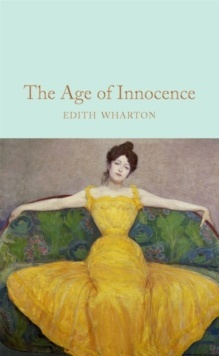The Age of Innocence

Editorial Pan
Colección Macmillan's Collector's Library, Número 0
Fecha de edición mayo 2019 · Edición nº 1
Idioma inglés
EAN 9781509890033
384 páginas
Libro
encuadernado en tapa dura
Dimensiones 111 mm x 154 mm
Resumen del libro
Edith Wharton's Pulitzer Prize-winning novel, The Age of Innocence, is both a poignant story of frustrated love and an extraordinarily vivid, delightfully satirical record of a vanished world - the Gilded Age of New York City. Part of the Macmillan Collector's Library; a series of stunning, clothbound, pocket sized classics with gold foiled edges and ribbon markers. These beautiful hardbacks make perfect gifts for book lovers, or wonderful additions to your own collection.
This edition features an introduction by award-winning novelist Rachel Cusk, author of Outline. As the scion of one of New York's leading families, Newland Archer has been born into a life of sumptuous privilege and strict duty. But the arrival of the Countess Olenska, a free spirit who breathes clouds of European sophistication, makes him question the path on which his upbringing has set him.
As his fascination with her grows, he discovers just how hard it is to escape the bonds of the society that has shaped him. The novel was the inspiration for Martin Scorsese's film of the same name, starring Daniel Day-Lewis and Winona Ryder.
Biografía del autor
Edith Wharton (1862-1937) es una de las autoras fundamentales de la literatura estadounidense. Nacida en el seno de una familia de la clase alta neoyorquina, inmortalizó esos ambientes sociales en la que se considera de forma unánime su obra maestra, i La edad de la inocencia /i (1920), con la que se convirtió en la primera mujer en ganar el Premio Pulitzer. Fue extraordinariamente prolífica en su producción narrativa, pero cultivó todos los géneros: poesía, libros de viajes, crítica literaria, autobiografía e incluso una obra de teatro que permaneció inédita hasta más de cien años después de su muerte.








